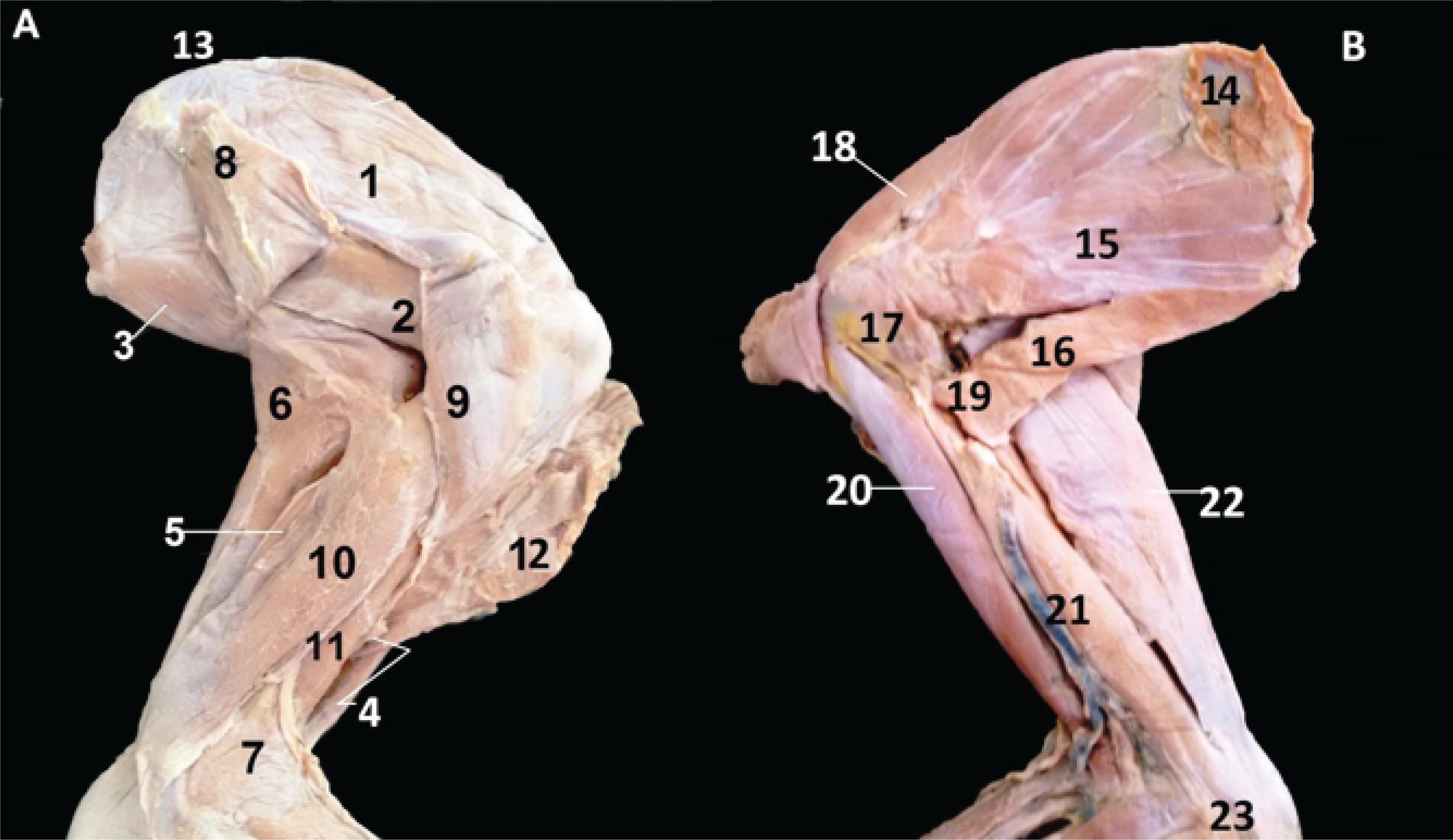Abstract
The maned wolf, Chrysocyon brachyurus - Illiger, 1815, is the largest canid of South America and its found in the central region of the continent, preferably in open field biomes. It may reach between 20 and 33 kg and up to 125 cm. It is under threat of extinction. Anatomical knowledge is of great importance to the completion of information about wild species and clinical, surgical, and conservationist implications. This study aimed to describe the bones and the bone accidents of the cingulate forelimb of brachial region and their respective muscles in maned wolf, through dissection procedures of animals preserved in 10% formalin solution. The animals belong to the didactic collection of the Laboratory of Education and Research on Wild Animals of UFU, and are the result of roadkill. The bones are scapula and humerus. There was no clavicula. The muscles are: M. deltoideus; M. supraspinatus; M. infraspinatus; M. teres major; M. teres minor; M. triceps brachii caput: laterale, accessorium, longum and mediale; M. anconeus; M. biceps; M. subscapularis; M. coracobrachialis; M. tensor fasciae antebrachii; M. brachial. The scapula and arm have specific accidents; however, they are similar to domestic dogs. The humerus is straight. The muscles have some peculiarities.
Keywords:
anatomy; canids; maned wolf; muscles; osteology



